Insulation of the apartment from the inside most often becomes necessary in houses with panel walls, since they are not thick enough, they quickly cool down, the heating system cannot fully cope with its tasks, and the temperature in the rooms drops. How to insulate a wall inside an apartment, and what methods and materials to use - this question confronts most homeowners in concrete high-rise buildings. External walls in such houses become cold especially quickly, and often, due to temperature changes, they begin to dampen and become covered with mold.
Sometimes, when there is such an opportunity, the thermal insulation of the walls is carried out from the outside, as this — more efficient way keeping warm. However, this option is very expensive due to the complexity of its implementation, and it is impossible to carry out such events on your own, without the use of special equipment, if the apartment is located above the first or second floor. Therefore, a decision is made to insulate the walls from the inside, to the detriment of the total usable area. But be that as it may, a warm apartment of a slightly smaller area is better than large cold rooms. Internal work may well be carried out with your own hands, without the involvement of specialists. The main thing is to choose the right material and have the right tools.
If autonomous heating equipment is installed in the apartment, then wall insulation will help save energy resources, which are very expensive today.
Compared with the external thermal insulation of walls, the internal insulation of the apartment has its rather significant drawbacks:
- An insulated wall does not accumulate or retain heat, and heat losses range from 8 to 15%.
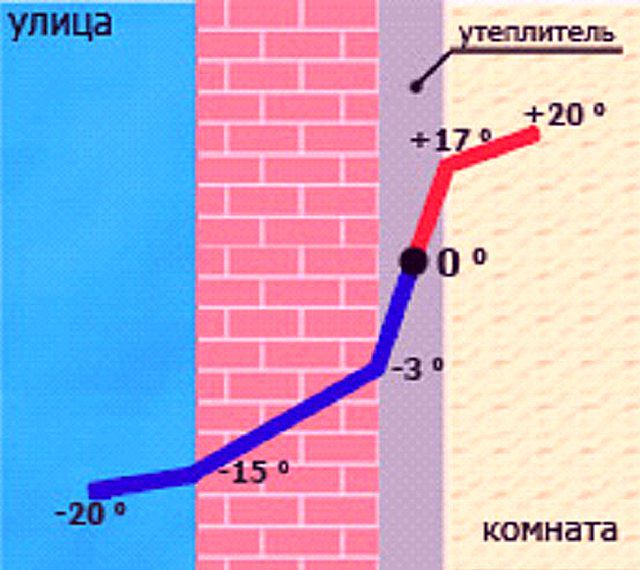
With internal insulation, the “dew point” may be inside the insulation, which leads to dampness
- The “dew point” for internal thermal insulation is between the insulation and the wall, sometimes inside the insulation layer. This leads to the formation of condensation and the appearance of mold colonies. .
- An improperly insulated wall from the inside will freeze all the time, and this inevitably causes irreversible destructive processes in the thickness of the material over time.
Proper insulation
So that condensation does not form under the thermal insulation layer from temperature changes in the winter, and, as a result, mold spots do not appear on the walls, all technological recommendations for insulating concrete walls from the inside of the apartment must be carefully followed.

An important element in the structure of the thermal insulation "pie" is a high-quality vapor barrier. It should protect the insulation from moisture penetration, which will allow the entire structure to effectively perform its functions for a long time.
What work needs to be done to achieve the goal?
- It is necessary to purchase a high quality vapor barrier film and waterproof tape to seal the seams on the connection of its sheets.
- For the insulation layer, you need to choose a material that has low vapor permeability. It is desirable that this indicator be lower than the vapor permeability of the wall material. In this case, moisture evaporation will occur towards the street, and not inside the apartment.
- When gluing the insulation, its surface is completely smeared with glue using spatula-comb, and it is pressed very tightly against the surface of the wall, so that even small cavities do not remain between them.
- In order to avoid the occurrence of excessively high relative humidity inside the premises, they must be equipped with additional ventilation of a natural or forced type. For example, for this, valves are installed on the window frames, through which air will enter the room.
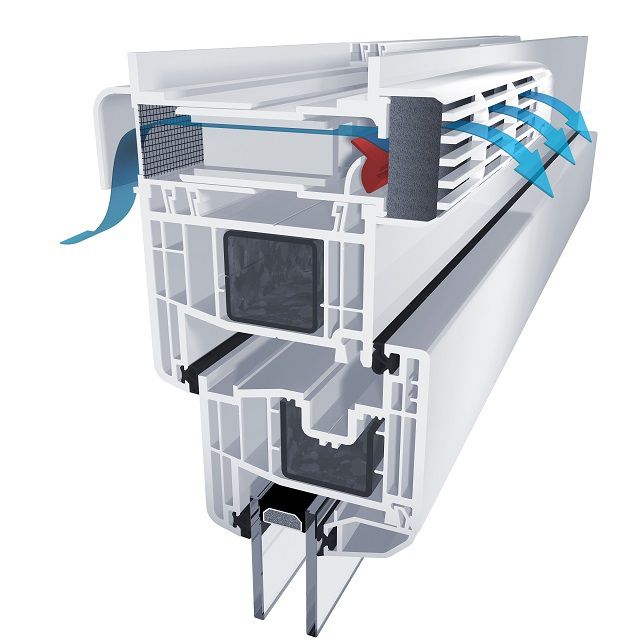
- Next, you need to accurately calculate the required thickness of the insulation. It will depend on the average daily temperature in the region in winter. The thickness of the thermal insulation material should not be less than those parameters that were obtained during the calculations, otherwise the steam-thermal balance will be violated.
- Before installing the insulation system, the walls must be treated with special primers. They will "treat" the wall, will not allow mold colonies to form on it, and will also increase adhesion when gluing thermal insulation.
- Installation of insulation can only be started after the wall has completely dried.
- It is impossible to allow the formation of "cold bridges", which can nullify the entire insulation process. The risk of their occurrence is especially high at the junctions of walls and ceilings.
What heaters and how are they used
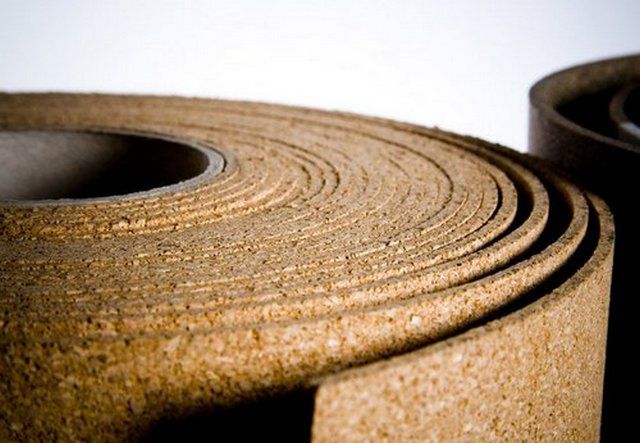
Cork is an excellent natural material for thermal insulation.
Such a thermal insulator is made in the form of plates or rolls from the bark of a special variety of oak - cork. Therefore, it is an environmentally friendly safe insulation, which is very important for interior decoration.
Using high quality material, you can solve three problems at once - these are noise and sound insulation, as well as decorative wall decoration.
An important condition for the installation of cork coating is the evenness of the wall, therefore, before proceeding with its gluing, it is necessary to carefully prepare the surface. This process is carried out as follows:
- The old coating is completely peeled off the wall.
- Then the entire surface is treated, which will protect the wall from damage by fungus or mold.
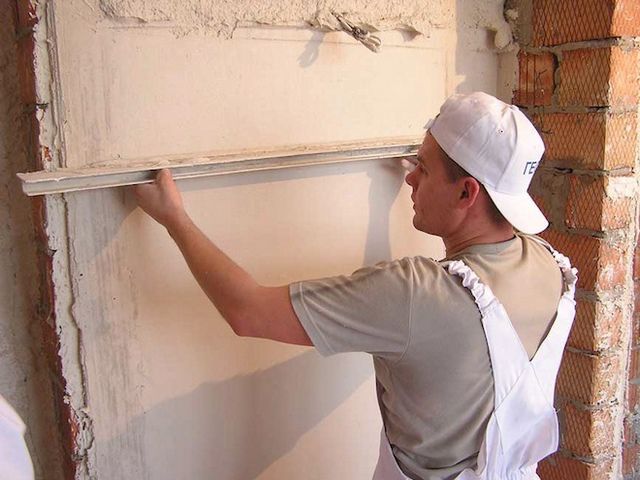
- The next step is to level the surface.
- You can ennoble the walls with drywall, but in this case, the sheet must be completely smeared with waterproof glue or mounting foam, so that there are no voids under it. Drywall is firmly pressed against the wall and additionally fixed with anchors or plastic "fungi".
- Cork material can be glued onto a dried wall. To do this, use a special glue designed for such purposes.
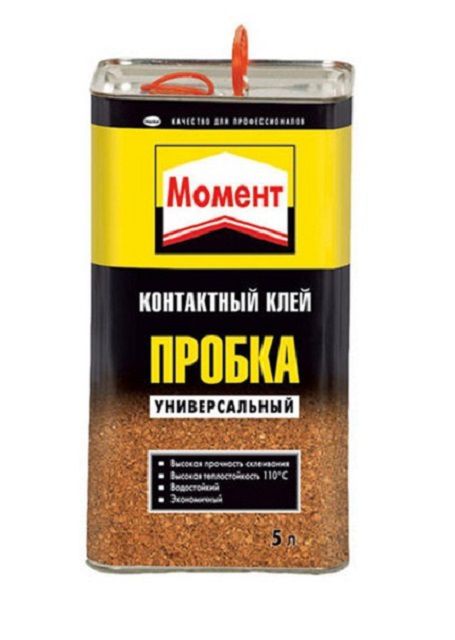
The positive qualities of the material, in addition to its environmental friendliness, low thermal conductivity and good noise absorption include:
- Ease of installation of cork wall covering while maintaining accuracy in work.
- Aesthetically attractive respectable look.
- Always warm and pleasant to the touch surface of the material.
- A variety of release forms, textured patterns and shades.
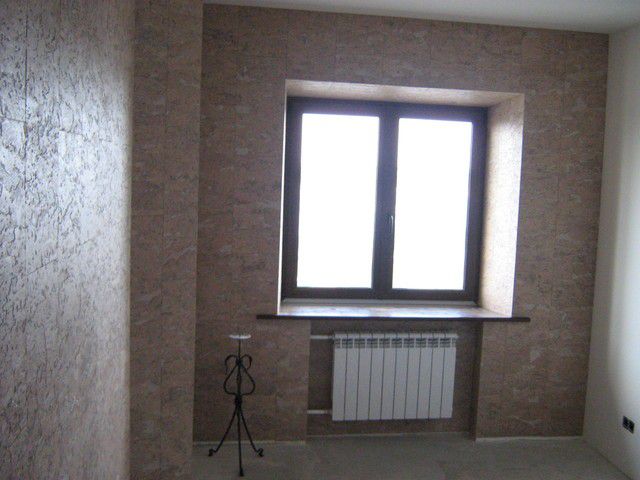
Cork is not only an excellent thermal insulator. It will give the room a special decorative effect.
- Cork insulation does not have a large thickness, therefore it does not make the area of \u200b\u200bthe room smaller - this quality compares favorably with other thermal insulation materials.
Penofol
Penofol, in its essence, is a rolled polyethylene foam with a thickness of 2 to 10 mm, on one side of which it is applied, which contributes to the reflection of heat into the room.
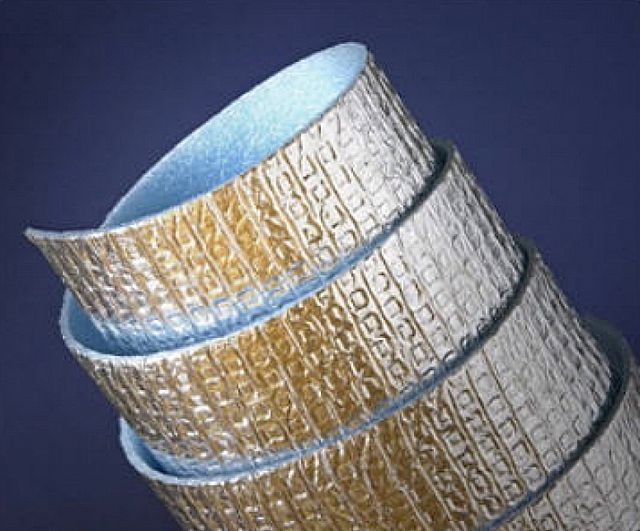
Penofol - foamed polyethylene with a foil coating
- Before its installation, the surface is prepared in the same way as for a cork coating.
- Penofol can be fixed to even walls with the help of construction double-sided tape. Under any circumstances, the material is placed with the foil side into the room. This creates a kind of thermos for efficient heat retention.
- stripes penofol are laid end to end. Between themselves, they are glued with a special adhesive tape, which also has a foil-coated reflective surface, since the entire coating must be airtight.
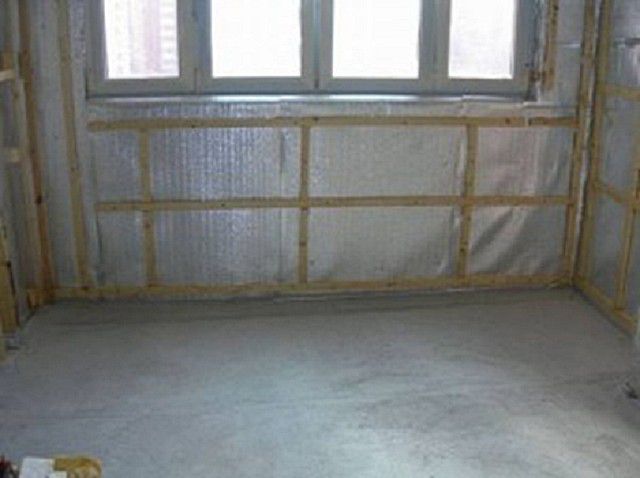
- On top of the penofol fixed to the wall, a crate of slats, bars or galvanized metal profiles is installed. This frame with a tanet base for the installation of wall paneling or wall cladding with plasterboard sheets. The plasterboard surface can subsequently be covered with plaster, wallpapered, or carefully puttied and sanded, and then painted.
- When installing drywall or lining, it is very important to leave a gap at the top and bottom of the structure, which will serve as a vent for air circulation so that moisture does not accumulate.

Despite its small thickness, penofol is an excellent heat and sound insulator. It is used as a separate insulation, but it can also be used in combination with other materials. It attracts with the simplicity and speed of laying on walls, floors or ceilings, as well as with a long service life.
Video: insulation of internal walls with foil material
When choosing a material for insulating a dwelling from the inside, you must first examine all the surfaces of the walls on which thermal insulation will be installed. If the wall is dry and there are no mold spots on it, then you can start preparing the surface and purchase insulation material. It is strictly forbidden to carry out such work on an unprepared basis. Not only will such insulation not give the desired effect - you can thoroughly spoil the apartment atmosphere, make it damp, unhealthy, since spores of many types of mold or fungus are extremely dangerous for people's health, especially for those suffering from chronic respiratory diseases or a predisposition to allergic reactions. .
In general, any of the apartment methods presented in the publication from the inside will not require any complex additional equipment, and this technological process can be carried out independently.



